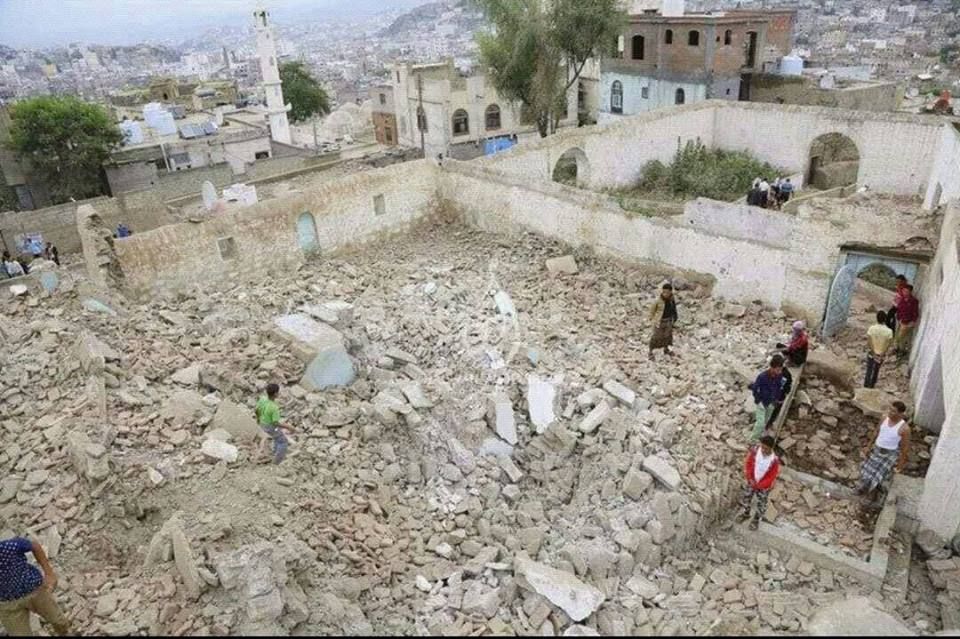Jeddah- Violations staged by Houthi-led insurgency have increased, in an attempt to whitewash any progress made with each round of political negotiations between the Yemeni government and insurgency delegations in Kuwait.
Yemen’s public will supports all international findings on ridding their country from a stalemate long inhibiting the peace-making process -which includes the comprehensive cessation of hostilities.
However, provocations continue to hinder border integrity shared between Yemen and the Kingdom of Saudi Arabia–seven Saudi soldiers have been killed during clashes with Yemeni forces, backed by fighters of Ansarullah movement (a Houthi majority movement), close to the kingdom’s southwestern border region of Najran.
Saudi air power has also been relentlessly defending borders against Houthi-launched ballistic missiles.
Reading into the insurgency’s violations, it is believed that Houthi fighters are escalating the note of clashes and looking forward to force a reaction out of the Saudi-led Arab Coalition so that all hopes of saving the peace political process in Kuwait are demolished.
The Saudi-led Arab coalition to salvage Yemen made a statement on Saturday announcing the coalition’s air campaign had raided Houthi crowds spread across the borderline shared with Saudi Arabia– dozens were killed by the clashes alongside massive collateral damage striking the insurgency’s artillery power.
The coalition’s military campaign continues to fight Houthis attempting to infiltrate Saudi borders.
As for the situation in Yemen, insurgency forces and allies (such as forces loyal to the ousted President Ali Abdullah Saleh) carry on with crimes and attacks violating ancient religious grounds and shrines found in each of Taiz, Hudaydah and Mukalla.
Houthi extremists in Yemen have blown up a 16th century mosque housing the shrine of a revered Sufi scholar in the city of Taiz, a local official reported.
Yemen’s commission for antiquities and museums condemned the destruction of the site that is considered the most famous in the city of Taiz.
It said the mosque’s white dome was “one of the biggest domes in Yemen and one of the most beautiful religious sites in old Taiz”.
Most of the attacks staged by the insurgency, aiming to stir sectarian strife further and add years to the Yemeni crisis, make it very probable that the same factions are receiving foreign orders.
The tactical yet horrendous attacks Houthis stage against religious property aims at egging on sectarian conflict between Yemen’s Sunnis and Shi’ites.
Houthis in Yemen perform on basis of well-organized tactics and offensives that belong to an agenda drafted with a higher precision of their capacities. Such an intricate plan with detailed calculations cannot
possibly be placed by the “chaotic”insurgency groups; the Iranian strategy is clear and accordant.
For over a year now, Iran had unremittingly attempted to gain dominance across the Yemeni arena, operating via Houthis.
Nonetheless, all Iranian aspirations were eventually made sterile as Gulf countries raced to secure territory and salvage Yemen launching the “Decisive Storm” operation, in which Iran’s greatest proxy was pushed into a tight corner.
The alliance proved very much effective, recording political and security victories for the region.
Tehran subsequently lost all hopes of having a say in Yemen, a part and parcel of a greater plan to close down on Gulf countries exploiting regional armed militias.
Political analyst Abdul Rahman Trere said that Iran’s plan develops in the direction of Houthis remaining a Hezbollah-styled armed faction.
